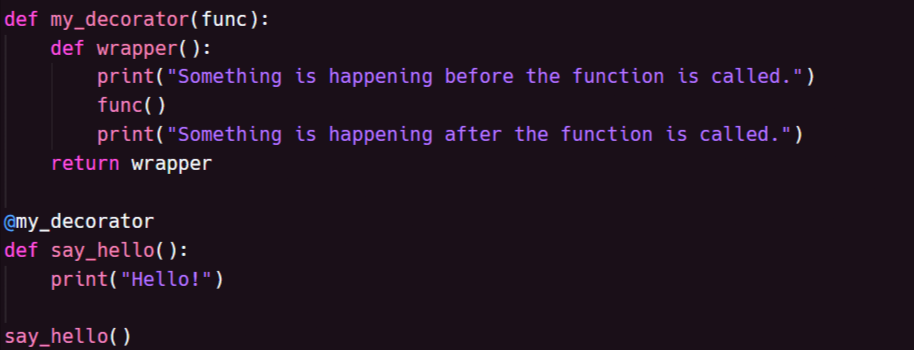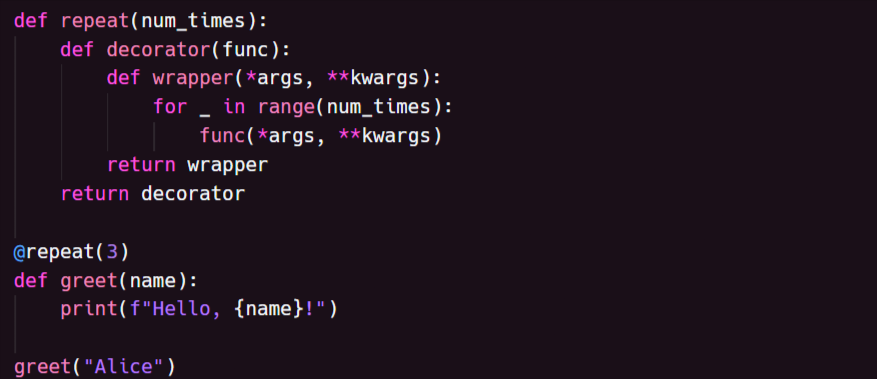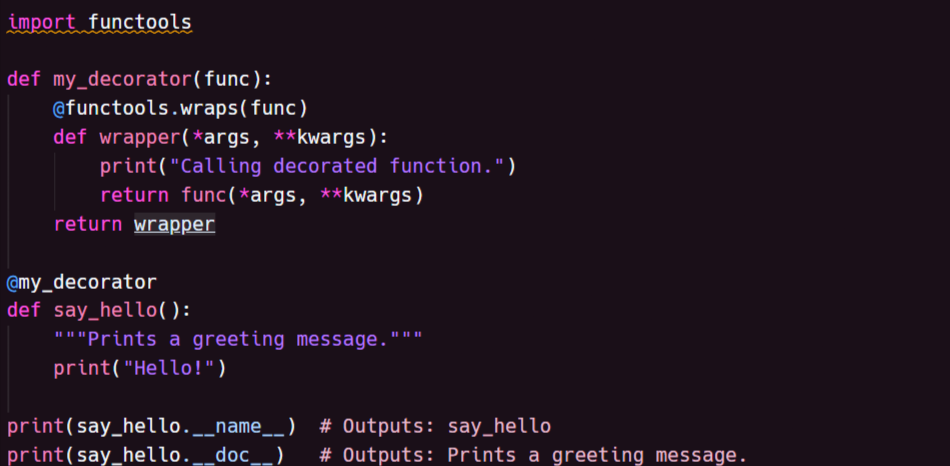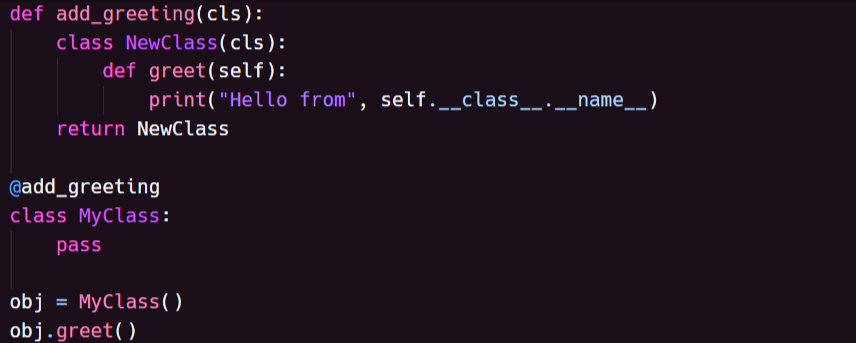Unlocking the Power of Python Decorators: Enhancing Your Code with Ease
 Shrey Dikshant
Shrey Dikshant
Introduction

Decorators are a powerful feature in Python that allow you to modify the behavior of functions or classes. They are used for logging, access control, memoization, and more. This blog post will introduce you to Python decorators, providing examples to help you understand their usage.
What are Decorators?
A decorator is a function that wraps another function or class, modifying its behavior. Decorators are denoted by the @ symbol followed by the decorator function name, placed above the function or class definition.
Basic Decorator Example
Here's a simple decorator that prints a message before and after a function call:

Output:

Decorators with Arguments
Decorators can also accept arguments by nesting another function:

Output:

Using functools.wraps
To preserve the original function's metadata (such as name, docstring), use functools.wraps in your decorators:

Output:

Class Decorators
Decorators can also be applied to classes. Here's an example of a class decorator:

Output:

Subscribe to my newsletter
Read articles from Shrey Dikshant directly inside your inbox. Subscribe to the newsletter, and don't miss out.
Written by

Shrey Dikshant
Shrey Dikshant
Aspiring data scientist with a strong foundation in adaptive quality techniques. Gained valuable experience through internships at YT Views, focusing on operation handling. Proficient in Python and passionate about data visualization, aiming to turn complex data into actionable insights.